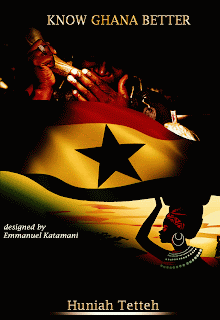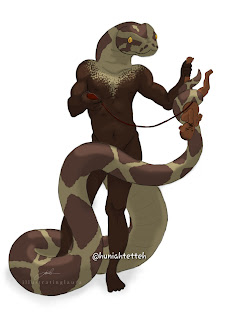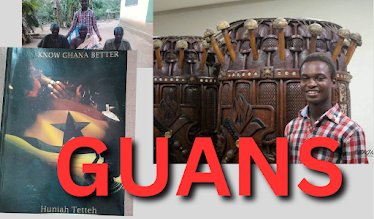MODERN GHANA & THE COMPLETE LECTURE ON ALL THE LANGUAGES SPOKEN IN GHANA
We have learnt how most of the tribes came to be in Ghana. We have also studied some basic courtesy in some selected languages. In modern Ghana, all the tribes have learnt to stay united inorder to live in peace and in harmony. The capital city of Ghana is Accra and it was divided into ten regions, Upper-West Region, Upper-East Region, Norhern Region, Brong-Ahafo Region, Western Region, Eastern Region, Volta Region, Central Region, Ashanti Region and Greater-Accra Region.
There was a move to
add 6 new regions to the already existing ten regions: Western-North Region,
Oti-Region, Ahafo Region, Bono East Region, Savannah Region & North-East
Region. This move was proposed under the Akufo-Addo government 2016-2020. The new
regions are to facilitate administration so as to speed up development in the
nation but some tribes felt otherwise as they opposed that it would bring about
linguistic and tribal divisions. A
referendum was held on the 27th of December, 2018 for the affected
areas to decide and subsequently they all voted yes thus as, at the 29th
of December, 2018, Ghana had 16 regions as compared to the previous ten.
Well, you might have
also observed that all the languages of Ghana relate each other in one way or
the other. Some words basically cut across all the languages in the country
whereas others are modified a little. Well, this is because all the languages
in Ghana fall within a very giant family of languages spoken in West Africa
called the Niger-Congo language group.
The Niger-Congo languages have what we call subgroups. And among these
sub-groups, we have the Kwa, Gbe, Voltaic, Nyo, Shilo, Bantu, and many more
language groups but the Ghanaian languages fall only within the Kwa, Gbi and
Voltaic language families.
The Kwa, Gbe and
Voltaic language families are known for making the “kp, gb, ŋm” sounds and they
are all related to one another. The above-mentioned sounds are very unique to
West African languages. Languages like those in the Bantu family are similar to
the Ghanaian languages but they lack the kp, gb, ŋm sounds. Well the kp, gb, ŋm
are more of digraphs* rather than a pair of isolated sounds.
Once I travelled
outside the country and I was with Setswana speakers. I initially had no idea
they were Motswanas (people from Botswana) so as they were speaking, they made
a sound to say “yes” which sounds exactly like Ghanaian and Togolese languages.
So I quickly asked what language they were speaking and I was told Setswana. I
told them the reason why I got attracted to them was the sound “ee” which was
to mean “yes” in their language and it sounded exactly like in Dangme, Ewe,
Hausa, Dagbanli etc.
So there was this
lecturer among them who asked me concerning my native language and I said Ga.
And I further explained it is part of the Kwa branch of the Niger-Congo family
of languages which she said so is their language. It is a Bantu language also
from the Niger-Congo family of languages so it comes as no surprise to her that
there are relations between Bantu languages and Ghanaian languages.
Bantu languages would include Swahili, Setswana, Lingala,
Kongo, Zulu, Ndebele, Xhosa, Sotho, Swati e.t.c and they are all part of
Niger-Congo, even though they may be in Central and Southern Africa.
To cite another example, Bantu languages would
translate a human being into their language as “mo [pronounced Mɔ]” and in some
Kwa languages in Nigeria, Benin and most especially Ga which is spoken in Ghana;
a person is said as “gbɔmɔ or mɔ”. “Gbɔmɔ” would literally mean “gbɔ: carved or
moulded” whereas “mɔ: person”.
Although these Bantu languages are all part of the
Niger-Congo group of languages; they do not make these notable sounds that the
West African languages are known for. Below is a picture illustrating the
languages of Africa including the Niger-Congo language Family.
THE CATEGORIES OF LANGUAGES SPOKEN IN GHANA
1.
The Kwa linguistic or language group got their name from the fact that they are known for calling either humans or apes “Kua or Kwa.” Also another theory says they are the only group of people who use the “kw” sound a lot. Yet the view is held by some linguists that Kwa is as a result of the “kw” sound in most of the day names of the Kwa people. This could be observed in the example below.
|
|
AKAN |
GA |
EWE |
|||
|
DAYS |
MALE |
FEMALE |
MALE |
FEMALE |
MALE |
FEMALE |
|
Mon |
Kwadjo |
Adjoa |
Kojo |
Ajoa |
Kojo |
Ajoa |
|
Tues |
Kwabena |
Abena |
Kwabla |
Abla |
Kobla |
Abla |
|
Wed |
Kwaku Abeiku |
Akua |
Kwaku Abeeku |
Aku |
Koku |
Aku |
|
Thurs |
Yaw |
Yaa |
Kwao |
Yaa |
Yao |
Yaa |
|
Fri |
Kofi |
Afia |
Kuofi |
Afua |
Kofi |
Afi |
|
Sat |
Kwame |
Ama |
Kwami |
Aba |
Kuami |
Ama |
|
Sun |
Kwesi |
Esi |
Kwashi |
Koshi |
Kosi |
Esi |
Well, in the case of
the Kwa people referring to human beings as kua, it is basically not all of
them but some selected languages. For instance, in Ga, a chimpanzee or Gorilla
is referred to as Kũa. Similarly, in
Dangme, twins are called “hawihi” and a mother is called “nyɛ or mami.” But then
“a mother of twins” is translated to Dangme as “kuanyɛ.” Similarly, Ga “kwamaŋ”
is a provocative word translated as “everybody” in place of the actual Ga word
“mɔ fɛɛ mɔ.” So a Ga man when offended can use Kwamaŋ as an “insult” in place
of “mɔ fɛɛ mɔ” meaning “everybody” to send a strong signal to a group of
people.
Also in Anyin, a
person or human is referred to as “fuã” whereas its sister languages use “sonla”.
Now Anyin fuã does not sound like an f but a blend of k, p and f.
Also, the Kwa people
say come in similar fashion, “ba.” The
Akans although they say come as bra will
not say “wabra” to mean “he has come”
instead they say “w’aba.” This
phenomenon is not only observed in
the above mentioned languages rather like earlier stated, it cuts across a
wider range of Kwa languages. Still in Anyin, come is “ba” and not “bela” as said
in Nzema and in Ahanta.
So you may have
observed that in Dangme, Gonja, Efutu, Nkonya, Likpe, Logba, Ntsumburun,
Gidere, Nawuri and some other Ewe-Akan Guan languages, “come” is said as “ba”
whereas in Sele it is said as “wa.”
Among the Akuapem
(Larteh, Kyripon, Gua) “come” is
said as “bɛ.” In Buem, it is said as “bo”
and in the Nzma, Ahanta, Sefwi, Bawule, Chakosi, Anyin and other Akan-Guan
dialects, “come” is likewise said as “bela.”
As well, the Kwa
people have a common “n” sound when saying “water.” In Ga and Dangme, it is
“nu” and “nyu” respectively. In Akan, they say “nsu” or “nsuo.” In Guan, it
varies. It is either “ndu,” “ntu,” “ntsu,” “nzule” e.t.c
2. The Gbe people are those I observed to generally
refer to a language as gbe or ɛgbɛ (since I could not get any reason
why they are called so). They are mostly found in Togo, Benin and in Ghana. That
may not be the absolute criteria for classification but then they speak a
dialect continuum* of similarly related languages. So if a line is drawn from
the Volta Region through to Nigeria, the language will appear the same but then
as you move from one community to the other, the languages keep varying from
each other until you get to Nigeria.
I may not say specifically for the Edo language spoken
primarily in Nigeria. It has a whole lot of sounds similar to the Gbe languages
and even it also uses the “v” sound
for saying come just like it is for Ewe
in Ghana. Edo in Nigeria is an
interesting language for my study even to the extent that aside come “vai” in
Edo, there are so many similarities it bears with Ghanaian languages.
It also bares some
similarities with Dangme and a typical example would be “Aze” in Dangme which
means “witch” and it is then again said as “Azɛ” in Edo (Beni).
Fon another Gbe language
is spoken primarily in the Republic of Benin. It is the next most spoken Gbe
language after Ewe. Fon looks much like Ewe hence a speaker of the Ewe language
will have less trouble learning Fon unlike speakers of other languages under
the Niger-Congo family. Other languages found in the Gbe family of languages
include Gungbe, Guingbe, phla-Phera, Aja e.t.c
3. For the Voltaic
language sub-family also known as the Gur languages; they extend to as far as
Burkina Faso. These people as I have observed speak similarly related
languages. They all have a common way of saying “woman” that is “Paha” but
there may be variations in the way they call a man although majority would either
say “doo” or “dau” or in similar fashion. In Bimoba, it is “joa.”
They also have the Niger-Congo “kp, gb and ŋ, ŋm” sound which tells of their possible origin. They
also have a similar way of calling water “kuɔ”
or in similar fashion. In Ghana, they occupy mainly the Northern parts but
there are a few of them like the Ntrubo, Mo, Kotokoli are found in parts of
Southern Ghana.
In Burkina Faso, Gur languages are the most spoken
throughout the country. The Gur languages that are spoken in Burkina Faso are
closely related to those spoken in Ghana. Gur languages are also spoken in
parts of the Republic of Togo, Republic of Benin, La Côte D’Ivoire, parts of Nigeria
and some other West African countries. They include the people of Mossi, Lobi,
Mampruga, Dagomba, Nanumba, Dega (Mo), Kokomba, Dagaaba, Sissaala, Bimoba,
Frafra (Nabdam, Nankani, Talensi, Gurunsi), Kusasi, Builsa, Busanga, Kamara,
Hanga, Safalba, Mori, Kotokoli, Ntrubo, Loso-Kabre, Wagara and many more
others.
The Voltaic languages are linguistically broken into
the Koromfe languages, Gur languages (Mole-Dagbon, Gurma and Gurunsi
languages), Bwamu, Kirma-Lobi, Dogose-Khe and Dogose-Gan languages.
In Ghana, Kasem spoken by the Kasina people is a
language isolate. A language isolate in the sense that it is not related to any
known language in Ghana hence, it is very difficult to learn. Kasem is
considered as a Gur language because of its present location and their ability
to create the Nankani language.
In short, West Africa
is home to groups of inter-related languages. The people are trying their best
to hold on to their rich history but little is being done to help. Niger-Congo
have the most languages spoken in Africa and perhaps the world; the individual
languages number more than a thousand and five hundred (1500) which represents
the highest in Africa. Yet, most of them are going extinct. So it would be
necessary for efforts to be put out to save most of these languages from dying.
We are now going to
take a look at most of the languages spoken in Ghana and how they relate each
other. We may not consider every word but we shall look at it using these
principal words: come, go, eat and water. We will use these basic words to
analyse the kind of languages we speak.
|
|
COME |
GO |
EAT |
WATER |
|
Ga |
Ba |
Yaa |
Ye/ye nii |
Nu |
|
Dangme |
Ba |
Ho |
Ye/ye ni |
Nyu |
|
Nzema |
Bela |
kɔ |
Di |
Nzule |
|
Sefwi |
Bra |
hɔ |
dzi/dzidzi |
Nzue |
|
Chakosi |
Bra |
Kɔ |
Di |
Nzue |
|
Anyin |
Ba |
Kɔ |
Di |
Nzue |
|
Twi |
Bra |
kɔ |
di/didi |
Nsuo |
|
Fante |
Bra |
kɔ |
zi/zizi |
Nsu |
|
Efutu |
Bà |
wɔ |
di/di atɔ |
Nsu |
|
Awutu |
Ba |
Yɔ |
Di akrobi |
Ntsu |
|
Nkonya |
Ba |
Nate |
Gyi/Gyi atɔ |
Ntsu |
|
Kyripon |
bɛ |
Nye |
Gyi/ji teyi |
Ntsu |
|
Larteh |
bɛ |
nyɛ |
Gyi/Gyi teyi |
Ntsu |
|
Gonja |
Ba |
yɔ |
Gyi/Gyi ajibi |
Ntsu |
|
Kuafasa |
Ba |
Jwo |
Zi |
Nzu |
|
Logba |
Ba |
Zɔ |
Kpɛ |
Nyu |
|
Siwu-Akpafu |
Ba |
klɛ |
De |
Ndu |
|
Sekpele |
Ba |
du/su |
di/di lesa |
Ntu |
|
Avatime |
Ba |
Sɛ |
Ŋa |
Kodaa |
|
Nyagbo-Tutrugbu |
Ba |
Shɛ |
Ŋa |
Buli |
|
Buem |
Bo |
trɔ |
Di |
Ntu |
|
Sele |
Wa |
tɔtse |
Lie/lie lesa |
Ntu |
|
Gurune |
Wa |
Wana |
Di |
Koo |
|
Dagaare |
Wa |
Chen |
Di |
Kuɔ |
|
Talensi |
Chemina |
Chema |
Di |
Kuɔ |
|
Mampruli |
Chamina |
Chama |
Ndi |
Koho |
|
Dagbanli |
Kamina |
Chama |
Di |
kɔm |
|
Kasem/Grushi |
Baa |
Ve |
Di |
Na |
|
Hausa |
Zo |
Tee |
Ji |
Ruwa |
|
Birifor |
Wa |
Chin |
Dzi |
Kũɔ |
|
Kusaal |
Kema |
Kem |
Di |
Kuo |
|
Bisa(Barke) |
Iyeba |
Ta |
De |
Hi |
|
Bisa (Lera) |
Bru |
Ta |
De |
Hi |
|
Gikyode |
Ba |
Kpa |
Gyi |
Ntsu |
|
Nawuri |
Ba |
Kpa/yɔ |
Gyi |
Ntsu |
|
Ntsumburun |
Ba |
yɔ/Nare |
Gyi |
Ntsu |









Comments
Post a Comment
Thank you! Gladly appreciate your feedback. You can also reach out personally via whatsapp or follow me on youtube/facebook Huniah Tetteh.